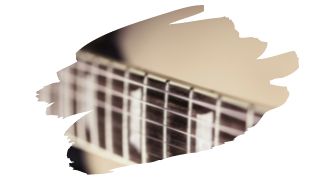Not all types of wood can make it as fretboard material, especially since Rosewood has set the bar pretty high. And when we think of alternatives to Rosewood fretboards, hardwoods such as Ebony, Roasted Maple, and even Padauk wood, come to mind.
But, what about Walnut wood? How does this premium hardwood lumber stack up as a fretboard choice?
In this post, we dive into how much of an impact your choice of fretboard material has on the tone and playability on your guitar. You will also learn what makes for great fretboard material…and why Rosewood and Ebony wood top the list as quality fretboard lumber.
And keep reading to find out if Walnut wood can really be substituted for either one of these two hardwoods…and what this means for your guitar.

This post may contain affiliate links to products that we receive a commission for (at no additional cost to you). Learn more here.
Does The Fretboard Wood Affect Tone?
Different tonewoods can somewhat impact the vibration of the sound on acoustic guitars. But, the same cannot be said for the fretboard.
The fretboard has next to no effect on the sound of your guitar. So, the type of wood used for your guitar fretboard does not effect sound quality and tone.
But, Does The Fretboard Wood At Least Affect Playability?
As long as that fretboard is durable enough to be played regularly, then no it doesn’t.
You see, fretboards tend to be made from dense hardwearing lumber. This is because pressing on those frets puts a fair amount of pressure on the fretboard.
So, as long as fretboard wood is tough, (and properly smoothed out), it won’t hurt your ability to play your guitar. Besides, the type of finish you use on the fretboard is more likely to create any playability issues.
Related Post: Sticky Fretboard? (What To Do When Your Fretboard Feels Sticky)
Great! So, Which Fretboard Material Is Best?
Well, before we dive into the best fretboard material, we need to know what makes for good fretboard wood in the first place.
That’s because, (besides being made from tough timber), quality fretboards tend to be made from wood that is stable as well.
What Is Stable Wood?
In the woodworking industry, when we say that wood is ‘stable’ we are referring to the fact that a particular type of wood doesn’t shift around much after it’s been seasoned.
You see, wood is a super absorbent material that soaks up water, moisture, and vapour like a sponge. And as the water vapour evaporates afterward, wood will shrink and begin to crack. This is what causes those problematic fretboard cracks.
In short, when we say that wood is stable, we mean that the wood is unlikely to dry out and suffer from cracking.
Now, unfinished fretboards don’t have any kind of protective sealing coat to safeguard them from moisture and cracking. So, when we leave a fretboard unfinished, it’s almost always because that fretboard is made from a very hard and stable lumber.
What Are The Most Stable And Durable Types Of Fretboard Wood?
Ebony and Rosewood fretboards are two of the most popular fretboard materials. These two hardwoods are tough and stable. What’s more, they’re saturated with their own natural conditioning tree oils.
Another top choice wood for fretboards is Roasted Maple. Maple wood is tough too, but unlike Ebony and Rosewood, Maple isn’t durable enough to survive too long without a protective sealant.
But, Roasted Maple is regular Maple wood that’s been put through a heat-treatment. This super-heated process turns Maple wood into a darker more stable version of itself.
That is why Roasted Maple fretboards can also be left unfinished (as it isn’t liable to crack and split either).
Related Post: Can Tru-Oil Really Finish And Protect Your Maple Fretboard?
OK, Got It. What About Walnut? Is Walnut A Good Fretboard Wood Too?
Well, Walnut may not be an oily wood, but it is a rather stable lumber.
Yet, when it comes to the fretboard, the wood used for this part of the guitar also needs to be dense and hard. That’s because, between scraping strings and fast fingers, the fretboard gets put through a lot of hard work.
On top of that, the fretboard is also fairly thin too. So, the wood of the fretboard needs to be hard enough to handle all of that fingerstyle pressure, without snapping or scratching.
So, fretboards are made from woods that have a fairly tough Janka hardness rating.
What Is The Janka Rating?
The Janka rating reflects where a wood species lies on the Janka Hardness Scale. This hardness scale measures the pounds of force it takes for metal to dent a piece of wood.
The higher the rating, the denser and harder the piece of wood.
Rosewood has a Janka rating of 1780 lbf. Which means that this wood can take up to 1780 pounds of force before it snaps.
Maple, (ie Roasted Maple), can handle impacts of up to 1450 lbf. And Ebony is in a league of its own with a Janka rating of 3220 lbf!
But, Walnut wood has a Janka rating of just 1010 lbf. That makes it 30% softer than Maple. And this, in turn, makes Walnut wood much too soft to handle the job of holding those frets in place.

To Sum Up, Here Are The Top 3 Takeaways From This Post…
- 1). The best wood types for fretboards are dense, hard and stable.
- 2). Walnut wood is a stable wood, and does not easily dry out, warp or crack.
- 3). However, Walnut wood is too soft to be used to make the fretboard. It is 30% softer than Maple wood.



